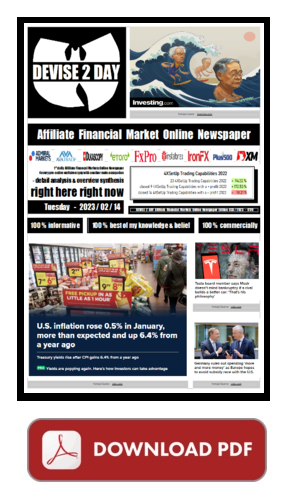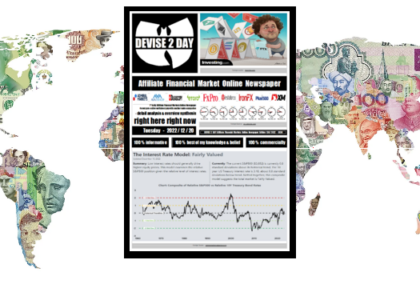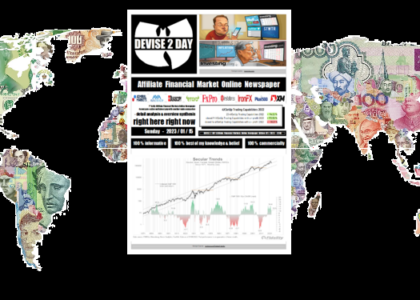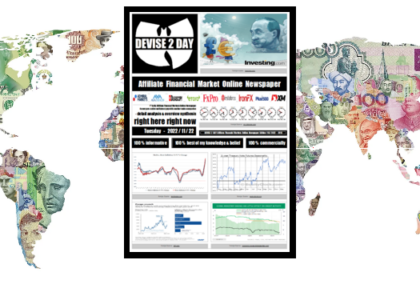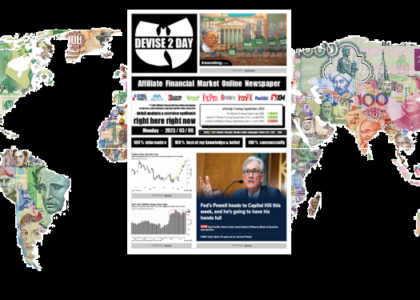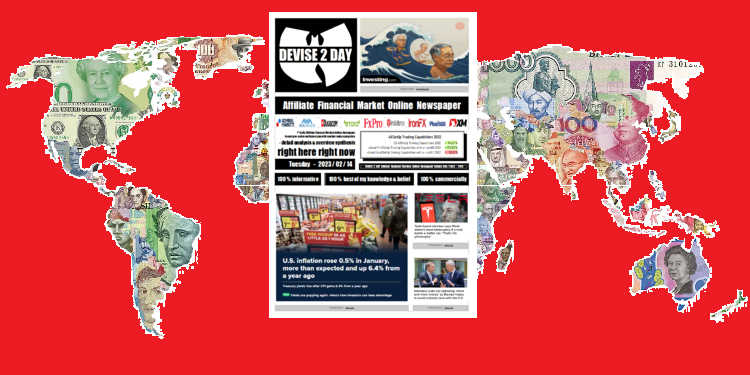
2023/02/14 (170.033) Technical Analysis – … & CBOT_MINI-YM1!
Disappointing US Inflation Data For WallStreet Bulls!
That`s Why We`re Closing Our DOW FUTURE Long 4XSetUp…
Basicly, US Inflation Rate Slows Less Than Expected
Good News Was US Food Inflation Eases To 8-Month Low At Least
Very Bad News Was The Fact That US Core CPI Rises 0.4% MoM As Expected
Bad News Was The Fact That US CPI Rises 0.5% In January, Most In Last Three Months
And What Scares Me As Bull In The Dow Was The Fact That US Energy Inflation Edges Higher to 8.7%
The annual inflation rate in the US slowed only slightly to 6.4% in January of 2023 from 6.5% in December, less than market forecasts of 6.2%. Still, it is the lowest reading since October 2021. A slowdown was seen in food prices (10.1% vs 10.4%) while the cost of used cars and trucks continued to decline (-11.6% vs -8.8%). In contrast, the cost of shelter increased faster (7.9% vs 7.5%) as well as energy (8.7% vs 7.3%), with gasoline prices rising 1.5%, reversing from a 1.5% decline in December. On the other hand, both fuel oil (27.7% vs 41.5%) and electricity prices slowed (11.9% vs 14.3%). Although inflation has shown signs of peaking at 9.1% in June last year, it remains more than three times above the Fed’s 2% target and continues to point to a broad-based advance on the general price level, particularly services and housing. Compared to December, CPI rose 0.5%, the most in three months, mostly due to the higher cost of shelter, food, gasoline, and natural gas.
Food prices in the United States increased at a slower 10.1% from a year earlier in January 2023, decelerating from a 10.4% rise in December and a peak of 11.4% in August. It was the lowest reading since May 2022, as prices slowed down further for both food at home (11.3% vs 11.8% in December) and food away from home (8.2% vs 8.3%).
US core consumer prices, which exclude volatile items such as food and energy, went up by 0.4% from a month earlier in January 2023, the same pace as in the prior month and in line with market estimates. The indexes for shelter, motor vehicle insurance, recreation, apparel, and household furnishings and operations increased; while the indexes for used cars and trucks, medical care, and airline fares were among those that decreased. Year-on-year, core consumer prices advanced 5.6%, down from a 5.7% increase in December, but slightly above market forecasts of a 5.5% rise.Consumer prices in the US increased 0.5% month-over-month in January of 2023, the most in three months, and in line with the market forecast. The index for shelter was by far the largest contributor (0.7%), accounting for nearly half of the monthly all-items increase followed by food (0.5%), gasoline (2.4%), and natural gas (6.7%). Increases were also seen for prices of motor vehicle insurance (1.4%), recreation (0.5%), and apparel (0.8%).
The cost of energy in the US increased at a faster 8.7% year-on-year in January 2023, compared with a 7.3% rise in the previous month, which was the lowest reading since February of 2021. Prices accelerated for natural gas (26.7% vs 19.3% in December) and rebounded slightly for gasoline (1.5% vs -1.5%). Meanwhile, there was a slowdown in prices of fuel oil (27.7% vs 41.5%) and electricity (11.9% vs 14.3%).
DXY Falls Further After CPI Data Today While US 10-Year Yield Only Slightly Down
US Stocks Waver After CPI Report Was Huge, But Not So Volatile As I Excepted! What Makes Me Afraid…
The dollar index fell to 102.6 on Tuesday, after inflation data showed consumer prices continued to moderate in the new year though at a slower pace than previously thought. The annual inflation rate in the US slowed only slightly to 6.4% in January from 6.5% in December, less than market forecasts of 6.2%. Still, it is the lowest reading since October of 2021. It comes after a chorus of Federal Reserve officials reaffirmed their commitment to bring down inflation with more rate increases in various statements. Fed Chair Jerome Powell also noted that rates could peak higher than anticipated if the jobs market remains robust and if inflation numbers do not abate. Moreover, the New York Fed’s latest inflation survey for January showed that Americans continued to expect elevated near-term inflation pressures. The yield on the US 10-year Treasury note, seen as a proxy for global borrowing costs, was slightly down at 3.69% on Tuesday, reversing an initial jump that sent the yield to above 3.7%, as investors assessed the latest CPI report out of the US. Inflation in the world’s largest economy eased to 6.4% in January, the lowest since October 2021, but slightly above market expectations of 6.2%, suggesting US policymakers will continue to raise rates to combat inflation. Last week, Fed Chair Jerome Powell acknowledged that rates may need to move higher than expected if the US economic strength threatens the Fed’s progress in lowering inflation.
US stocks swung between gains and losses on Tuesday as investors digested the latest US inflation data while reassessing the outlook for monetary policy. This wave of volatility in equity markets came after the closely watched US CPI reading for January landed at 6.4%, the lowest since October 2021, still above economists’ forecast of 6.2%. The report came on the heels of a blockbuster US jobs report earlier this month, suggesting that getting inflation under control will take more time than expected. Nevertheless, inflation is trending down, which would allow the Federal Reserve to continue with its moderate pace of rate hikes next month. On the earnings front, Coca-Cola reported quarterly revenue that topped forecasts. US stock index futures were slightly higher on Tuesday after briefly crossing into negative territory as investors digested the latest inflation report. The Labor Department’s CPI report showed that monthly inflation accelerated by 0.5% in January from December, in line with expectations, resulting in annual inflation slowing less than expected to 6.4%. Nevertheless, inflation is trending down, which would allow the Federal Reserve to continue with its moderate pace of rate hikes next month. On the corporate front, Coca-Cola rose 1% in premarket trading after reporting quarterly revenue that topped forecasts. In regular trading on Monday, the Dow gained 1.1%, the S&P 500 jumped 1.2%, and the Nasdaq Composite rallied 1.5%.
Dollar Steady Near One-Month High And/Or US 10-Year Treasury Yield Approaches 3.8%
The dollar index traded around 103.5 on Tuesday, hovering close to levels not seen since early January, with hotter-than-expected US inflation dashing hopes that the Federal Reserve will soon end its tightening campaign. The annual inflation rate in the US slowed only slightly to 6.4% in January from 6.5% in December, less than market forecasts of 6.2%, suggesting that getting inflation under control will take more time than expected. At the same time, a chorus of Fed officials reaffirmed their commitment to bring down inflation with more rate increases. The most pronounced selling activity was against the euro and the British pound. On the flip side, the dollar appreciated against the Japanese yen following the surprise nomination of Kazuo Ueda as the next Bank of Japan governor.
The yield on the US 10-year Treasury note, seen as a proxy for global borrowing costs, approached 3.8%, a level not seen in more than a month, as investors adjust their portfolios for a higher terminal rate. The closely watched US CPI reading for January landed at 6.4%, the lowest since October 2021, still above economists’ forecast of 6.2%, opening the door to further rate hikes by the Federal Reserve. At the same time, Dallas Fed President Lorie Logan was the last official to warn that borrowing costs may need to go higher than expected. Money markets have now priced at least two more 25 basis point rate hikes this year and see interest rates peaking at 5.2% by July. Looking ahead, Wall Street and the Fed are again in a standoff on the future path of interest rates, with the former betting on a rate cut later this year while the latter reaffirmed its view that interest rates will stay higher for longer.
US Stocks Fall in Volatile Trading
Wall Street Pares Some Losses While This Trading Day
US Stocks End Mixed After Dissapointment January CPI Report
The Dow Jones lost more than 200 points on Tuesday, while the S&P 500 and Nasdaq 100 were down 0.5% and 0.3%, respectively, as investors digested the latest US inflation data while reassessing the outlook for monetary policy. This wave of volatility in equity markets came after the closely watched US CPI reading for January landed at 6.4%, the lowest since October 2021, still above economists’ forecast of 6.2%. The report came on the heels of a blockbuster US jobs report earlier this month, suggesting that getting inflation under control will take more time than expected. On the policy side, Dallas Fed President Lorie Logan and Richmond Fed President Thomas Barkin were among the latest policymakers to warn that the US central bank will need to keep gradually raising interest rates to tame inflation. On the earnings front, Coca-Cola reported quarterly revenue that topped forecasts.
The Dow Jones was down 60 points recovering from a more than 200 points fall on Tuesday, while the S&P 500 and Nasdaq 100 turned green and added 0.1% and 0.5%, respectively, experiencing a volatile session as investors were digesting the latest US inflation data while reassessing the outlook for monetary policy. This wave of volatility in equity markets came after the closely watched US CPI reading for January landed at 6.4%, the lowest since October 2021, still above economists’ forecast of 6.2%. On the policy side, Fed John Williams at an NYC region meeting noted that the progress in inflation is still above the target of 2% and the US central bank will need to keep raising interest rates to curb inflation as their job is not done yet. He also mentioned that the economy will likely entail a period of subdued growth and some softening of labor market conditions. He sees the inflation easing to 3% in 2023, real GDP rising only 1% and the jobless rate climbing to 4%-4.5%.
The Dow Jones closed more than 150 points lower on Tuesday, while the S&P 500 finished slightly below the flatline and Nasdaq 100 added 0.5%, after a volatile session as investors were digesting the latest US inflation data and reassessed the outlook for monetary policy. This wave of volatility in equity markets came after the closely watched US CPI reading for January landed at 6.4%, the lowest since October 2021, still above economists’ forecast of 6.2%. On the policy side, Fed John Williams at an NYC region meeting noted that the progress in inflation is still above the target of 2% and the US central bank will need to keep raising interset rate to curb inflation as their job is not done yet. He also mentioned that the economy will likely entail a period of subdued growth and some softening of labor market conditions. On the earnings front, Coca-Cola lost 1.7 % after its earnings came in line with expectations while its quarterly revenue topped forecasts.
good morning, good day, and/or good night
at whatever time, wherever you are !
right here right now :

